 Music
Music  Music
Music  History
History 10 Less Than Jolly Events That Occurred on December 25
 Weird Stuff
Weird Stuff 10 Funny Ways That Researchers Overthink Christmas
 Politics
Politics 10 Political Scandals That Sent Crowds Into the Streets
 Weird Stuff
Weird Stuff Ten Bizarre Facts About The Doge Meme
 Our World
Our World 10 Ways Your Christmas Tree Is More Lit Than You Think
 Movies and TV
Movies and TV The 10 Coolest Stars to Set Sail on The Love Boat
 History
History 10 Things You Didn’t Know About the American National Anthem
 Technology
Technology Top 10 Everyday Tech Buzzwords That Hide a Darker Past
 Humans
Humans 10 Everyday Human Behaviors That Are Actually Survival Instincts
 Music
Music 10 Surprising Origin Stories of Your Favorite Holiday Songs
 History
History 10 Less Than Jolly Events That Occurred on December 25
 Weird Stuff
Weird Stuff 10 Funny Ways That Researchers Overthink Christmas
Who's Behind Listverse?

Jamie Frater
Head Editor
Jamie founded Listverse due to an insatiable desire to share fascinating, obscure, and bizarre facts. He has been a guest speaker on numerous national radio and television stations and is a five time published author.
More About Us Politics
Politics 10 Political Scandals That Sent Crowds Into the Streets
 Weird Stuff
Weird Stuff Ten Bizarre Facts About The Doge Meme
 Our World
Our World 10 Ways Your Christmas Tree Is More Lit Than You Think
 Movies and TV
Movies and TV The 10 Coolest Stars to Set Sail on The Love Boat
 History
History 10 Things You Didn’t Know About the American National Anthem
 Technology
Technology Top 10 Everyday Tech Buzzwords That Hide a Darker Past
 Humans
Humans 10 Everyday Human Behaviors That Are Actually Survival Instincts
Top 10 Things You Probably Never Knew About Real Vampires – 2020
If a figure resembling Christopher Lee’s patrician Dracula were to swirl his cape through your Greek or Serbian mud streets any time between 1650 and 1930, there was only one reason to be frightened of him: namely, because someone so unusual and aristocratic must surely be your distant landlord. He was certainly powerful and dangerous, but his cruelties and his blood-sucking were very much of this world, not the next. The real vampires were not suave, charming, sexy, chiselled or stylish. Many did not even drink blood. And yet, they terrified vampire believers out of their wits – and sometimes, quite literally to death.
10 Graveyards Supposedly Haunted By Vampires
10 The real vampires could not give a damn about fictional stereotypes
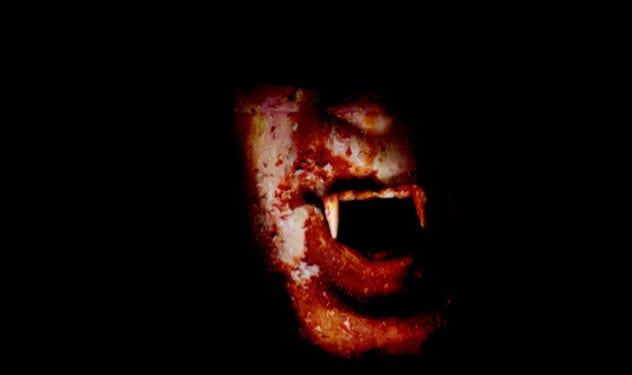
For a very long time, vampires were as common in Greece as in Romania. And although they scared Greeks out of their minds, they were quite able to walk about in full Greek sunlight. As any Greek could tell you, the only time vampires were compelled to remain in their coffins was ‘between the hours of Vespers on Saturday and the end of the liturgy on the Sunday morning’. Typically, what matters in real vampire country is not a physical environment, but a sacred one. For similar reasons, a key cause of vampirism in Greece was excommunication.
As for food? One Greek interviewed in the twentieth century stated: ‘No, I never heard of a vampire drinking blood…’. They might eat your liver or other organs. They might feed on themselves in their graves, or on nearby corpses. In Germany, worshippers at Sunday service were supposed to have heard them smacking their lips as they munched away below. These beliefs could have had various origins. One, grimly, was that people accidentally buried alive could gnaw on their own arms when starving. The sounds of lip-smacking relish were possibly corpse gases erupting, reminding us (as Paul Barber showed at length) that the dead are chemically very much alive for some time. Perhaps most of all, they reflect a basic notion that the vampire simply needs to feed on anything, and is not fussy. In fact, much like the zombie, he is not going to ask for a menu or a sommelier before sinking his undead teeth into your veins, flesh or liver.
Vampires in Greece and elsewhere might attack cattle, whilst Montague Summers tells of a vampire from the island of Naxos which robbed eggs and poultry. Greek vampires were known to drink the milk of goats, or to be completely vegan. One was found to be storing a nutritious picnic of grapes, apples and nuts in his coffin, and on another occasion six vampires were seen in a field grazing on green beans.[1]
9 Modern vampire fans would probably not recognize a real vampire
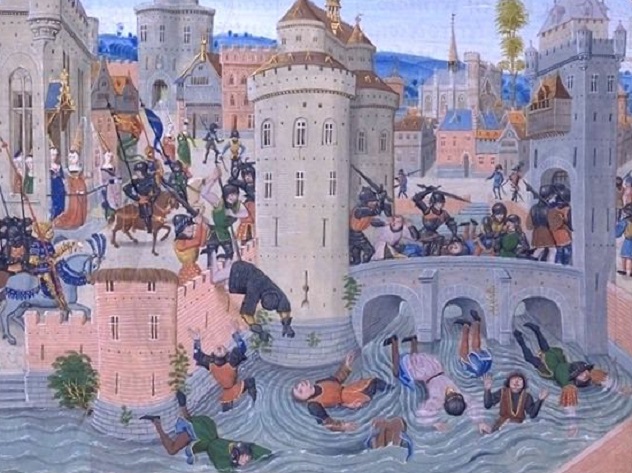
The real vampires looked like ordinary shabby dead peasants. Far from being stylishly gaunt and chiselled, they were often downright fat. Summers tells of one British revenant from Alnwick being of ‘frightful corpulence’, whilst Greek vampires could be ‘round like a full sack’ with skin ‘stretched like the parchment of a drum’. This was again due to corpse gases, though what mattered most to terrified onlookers was the impression that the body was failing to decompose. Far from pale, such corpses might be dark blue or black, again due to the chemistry of death. In countries where vampires did drink blood, a corpse with reddened skin was especially horrifying, as this indeed indicated that it was feeding on the living.
Just to make its appearance still more confusing, for those who truly feared them, vampires could take almost any shape whatsoever. Bats are not very common, but we hear of sinister dogs, cats, hares, pigs, weasels, birds and reptiles. At a vampire burning, any insects or birds or snakes rushing out of the flaming pyre would be forced back, lest this was the vampire seeking to escape in another form. In Romania just around a century ago (explains Agnes Murgoci), your low-tech vampire staking for the squeamish simply involved pinning a moth to the wall – just to be on the safe side. There were two kinds of logic beneath this bewildering array of shapes. One was that the Devil was above all a deceiver, a master of disguise, taking myriad bodies since that fatal serpent first shimmied up to Adam and Eve. The other was that, when you really believed in vampires, you didn’t need always need anything extraordinary to convince you. It was not so much a case of ‘seeing is believing’ as ‘believing is seeing’.[2]
8 The vampire comes to tuck you into bed
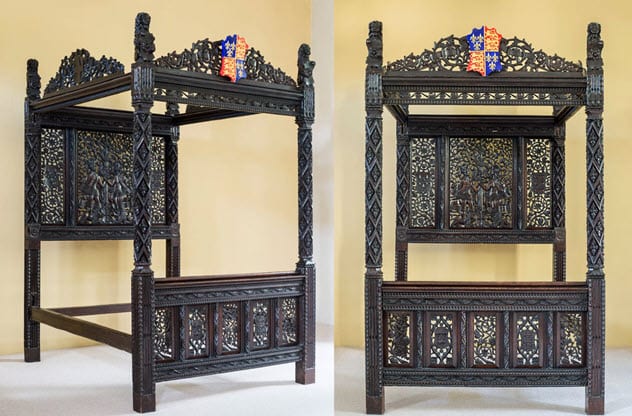
Every night when you go to sleep, you are temporarily paralyzed to stop you acting out your dreams. Usually, you know nothing about this. But those who wake into a kind of inbetween state can find themselves terrified at being both motionless and speechless. That is Sleep Paralysis. Next, enter the Nightmare… As you lie there helpless, something is coming slowly from the corner of your room towards you. It can take various shapes, but it is terrifying beyond all description. It gets on the bed; onto your chest; a feeling of tremendous weight and suffocation may now overwhelm you, sometimes combined with the sense that this demon is sucking the life from you.
Estimating that between 5-20% of people have experienced Sleep Paralysis and Nightmare together, the scholar Owen Davies cites a soldier who fought for 13 consecutive months in frontline Korea. This man said of his single Nightmare attack in 1964, “Never, before or since, have I experienced the fear of that night”’. To make this attack slightly less terrifying, the victim’s brain imposes on the entity a familiar cultural stereotype. So it is that SP Nightmares have yielded three demons across time and space: the witch, the vampire, and the alien abductor. In the most scientific and affluent countries in the world, SP victims have often been surprisingly bewildered, lonely or misunderstood. Although this situation has changed since I began researching the topic ten years ago, medical science has not banished the Nightmare – and may indeed not yet have understood it.[3]
7 The vampire scares people to death
In winter 1731-2 the village of Medvegia on the Morava River was convulsed by an epic vampire panic, centred on the death of Arnod Paole five years before. Had you stumbled into Medvegia at the right moment you could have seen (and smelled) eleven decapitated corpses blazing into the winter sky. During these events, at least two people died of fear. A young woman named Stanacka ‘lay down to sleep fifteen days ago, fresh and healthy, but at midnight she started up out of her sleep with a terrible cry, fearful and trembling, and complained that she had been throttled by the son of a haiduk by the name of Milloe, who had died nine weeks earlier’. She then ‘experienced a great pain in the chest and became worse hour by hour, until finally she died on the third day’.
Stanacka almost certainly died of ‘voodoo death’ catalysed by her SP Nightmare. Across centuries and continents the same symptoms are recorded. A European witch, vampire or ghost, or a tribal witch doctor triggers a terrifying assault of mind over matter; the victim shuts down, gives up all hope, and dies in one to three days. Shelley Adler found something broadly similar in the case of Hmong refugees in America, whose sudden mysterious deaths in the late 70s and 80s inspired Wes Craven to create Nightmare on Elm Street. Adler also showed how such a death could occur in the most modern clinical setting. In a Tennessee hospital in 1974 a man died some weeks after being diagnosed with cancer of the oesophagus, only for an autopsy to show that his oesophagus was perfectly healthy. Like all those victims of the supernatural, he had died of dark belief.[4]
6 Vampire poltergeists
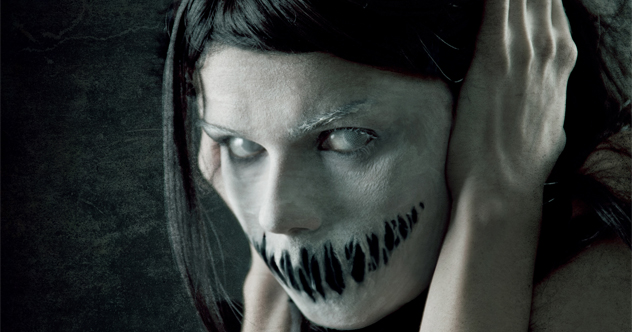
Given how terrifying Sleep Paralysis Nightmares can be to modern rationalists, we can understand the wild hysteria they provoked in Vampire Country. In such circumstances, vampire attacks were as good an explanation as any for an utterly bewildering phenomenon. By contrast with (for example) modern America, back there you told everyone about the nocturnal assaults, and got plenty of support. Unfortunately, because everyone soon knew of the vampire, a kind of electric terror snaked through the village, and soon more people were having Nightmares, and everyone hearing of those, and so…
And in some cases this wild terror seems to have involved a poltergeist. It took me a long time to get my head around these; but they really do exist. A classic vampire poltergeist exploded through the island of Mykonos just before Christmas 1700. After a man died suddenly in the fields, something (his ghost?) began by throwing furniture around and grabbing people from behind. As the terror of the Greek vrykolakas intensified, so did the violence. The vampire-poltergeist broke doors, roofs and windows, beat people up, and shredded their clothes. Whole families fled their houses to sleep in the open square, or escaped to the countryside. Finally, having carved up the dead man and only made matters worse, the islanders took his corpse to a separate island and burned it on 1 January 1701. Happy New Year!
There is very good evidence that stress does worsen poltergeist attacks. In Mykonos and elsewhere, rituals of destruction may have calmed the stress and therefore stopped the Nightmares or the poltergeist assaults. If so, we are forced to admit that such supposedly irrational behaviour had a certain value to it. And if you are really being besieged by a poltergeist, it is probably more rational to admit it than to let your scientific side try to talk you out of it.[5]
10 Truly Creepy Vampires From Around The World
5 When the Undead were simply NOT dead…
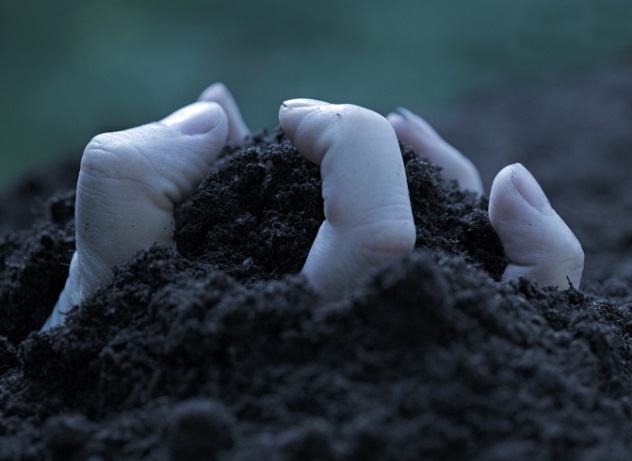
The intensity of vampire terror is nowhere more grimly clear than in those cases where the supposedly dead had actually been buried alive. This was a serious risk throughout history, as we have seen in the case of those disinterred corpses found to have gnawed their own arms. The problem was worse in much of vampire country, because of the belief that you must bury a corpse while it was still warm. And if a dead person did suddenly rise up out of coma, matters got much, much nastier.
On one Greek island around 1900 a comatose man slowly ‘began to arise’ from his coffin before the entire funeral assembly. ‘Well, the people there believed he was becoming a vrikolax; in their fright they threw everything they could find at him—sticks, rocks, anything.’ And killed him. From dead to undead, to dead again in a very short space of time. But this was nothing to what could happen in Russia at the end of the nineteenth century.
If you woke in your coffin in Russian Vampire Country, the best case scenario when you hammered on the lid was for the hysterical gravediggers to pile on the earth double speed and leave you there. But in a village called Sooroffsky in 1890 a man actually got out and fled into a woman’s house. Minutes later he had been seized by the horrified villagers, who had flung him down outside and hammered aspen stakes through his body. It was left there all day, until the ritual hour of sunset, when it was thrown into a bog.[6]
4 Vampires are much older than you think
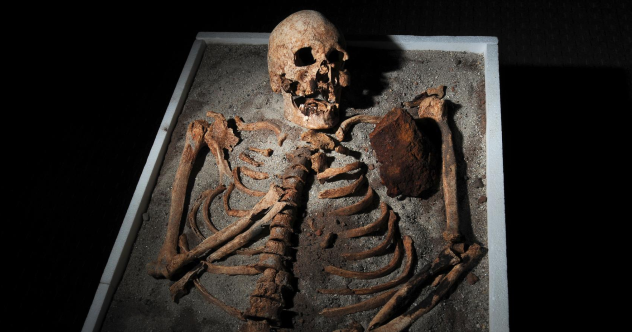
We have good reason to believe that revenants are as old as fear itself. Take, for example, the ‘vampire skeleton’ found in Mikulovice, in the Czech Republic, in summer 2008. In a 4,000 year old grave in east Bohemia, archaeologists discovered that the man’s body had been weighed down with two large stones: one on the chest, and one on the head. Head and heart have been classic locations for the seat of the soul throughout history – and the soul was the chief culprit in most vampire panics. In other cases you simply did everything you could to stop the revenant getting out. In summer 2012, for example, Bulgarian archaeologists digging in the Black Sea town of Sozopol ‘found two medieval skeletons pierced through the chest with iron rods’.[7]
Another technique was to simply turn a suspect corpse over. Then, if it tried to get out it would dig itself further into the earth, not to the surface. Incredibly, this was known to happen in World War One. In July 1915 in France an officer saw two British soldiers burying a German corpse face down. And in classic vampire country, preventative burial methods may well persist to this day. In a Romanian village called Marotinu de Sus, one Petre Toma died just before Christmas. Presently Toma’s ‘niece suffered Nightmares and appeared seriously ill. She claimed that her uncle was visiting her at night and feeding from her heart; that he was a strigoi’. Notice again the likely trigger of SP Nightmare. Toma’s corpse was dug up and inspected and verified as a strigoi. His heart was gouged out, spiked on a pitchfork and roasted, and charred fragments of it given to the sick girl to drink in water. She made a good recovery. All this happened in winter 2003-4, just before Stephenie Meyer signed her contract for Twilight. And yes – Marotinu de Sus is in Transylvania.[8]
3 Surprising vampire solutions

The hope that an upside down vampire could not wriggle itself over hints at another forgotten truth: the real vampires were not evil aristocratic masterminds with chilling plans for world dominance. Frankly, they were pretty dim. Mercia MacDermott explains that in Bulgaria ‘one could get rid of a vampire by approaching him with a warm loaf and inviting him to go to some distant place on the pretext of a fair or a wedding, and then abandoning him there. Alternatively, one could send him to get fish from the Danube, where he would fall in and be drowned’. She and Paul Barber add that numerous seeds, including millet, mustard and poppy, might be strewn along the path to the grave, as well as left in the grave itself. Perhaps suffering an early form of OCD, the vampire must count all these, and so is too busy to get to your bed and scare you to death. Count Dracula indeed…
Anyone disappointed by these less than lurid methods might want to bear in mind that actually puncturing a bloated corpse with a stake is a difficult and messy business; whilst burning up to eleven of them may exhaust a village’s fuel supplies in a hard winter. Still – if you are determined to burn a revenant, here is a low-tech Bulgarian solution. Your Bulgarian professional sorcerer would bottle the vampire. They used a holy icon and a bottle filled with the vampire’s favourite food – excrement, obviously. They then pursued their quarry relentlessly (rather like some vampire hunting sheepdog) until it had nowhere left to turn and was forced into the bottle. Cork your bottle, throw it on the fire, and Goodnight Vampire! Assuming that this did actually happen, we must guess that the vampire was invisible, and that the sorcerer’s main talent was a gift for high drama. Just a shame that vampire cinema had not reached deepest Bulgaria at this point.[9]
2 You could inherit vampirism

We owe many vampire treasures to two British army officers, St Clair and Brophy, who stayed for some time in the Bulgarian village of Derekuoi in the 1860s. They tell of how, one year, their young local servant Theodore, as ‘the son of a noted vampire’, was ‘doing penance during this present Lent by neither smoking, nor drinking wine or spirits, in order to expiate the sins of his father, in order to prevent himself inheriting the propensity’. Interestingly, Theodore’s father was a vampire-poltergeist, and so may well have been a genuine restless ghost. Falling in love with a Miss Tuturitza, Theodore found himself so suspect that he was forbidden by her parents to marry her.
Some years later, Brophy and St Clair gained an update on this saga. (Brace yourselves here.) Not very wisely, Theodore had switched his attentions to the girl’s sister, Marynka, and eloped with her. They also produced a child. As a result, Marynka’s house was burned, she was thrown in prison, and her vampire child put to death. If anyone can think of a good title for a film in which Romeo and Juliet stray into the plot of Twilight, many thanks…[10]
1 The vampires of New England
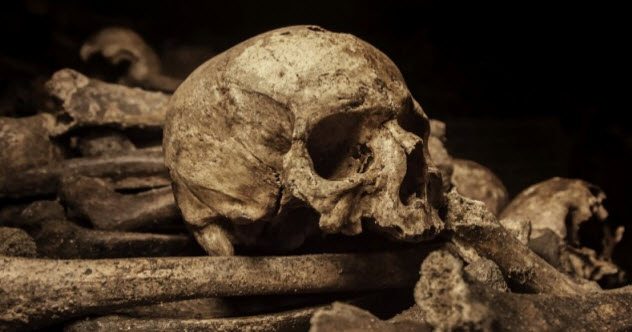
You may have seen recently that President Trump wishes to promote the teaching of ‘more patriotic history’ in US schools. Here are just a few of the things that could unearth about New England through the 19th century. Thanks to Michael E. Bell, author of Food for the Dead, we know that a special kind of vampirism existed here. At a time when consumption ravaged the north-east, claiming the lives of perhaps 13 members in just one family, the vampire was identified as scapegoat. One person died of consumption, and others soon fell sick. And so the first dead person was exhumed and inspected. Any sign of life at all – which might just remnants of heart or lungs – indicated that this ‘vampire’ was feeding on living relatives from the grave. Accordingly, heart or lungs might be burned, and the ashes given to the sick to drink in water.
A particularly famous New England vampire was young Mercy Brown, who died in 1892. But for me, the most memorable piece of American vampire destruction occurred in Vermont around 1830. On the village green in Woodstock a large crowd gathered to watch a heart being burned in an iron pot. It was presently buried in a colossal hole (ten feet square and fifteen feet deep), and pinned under a huge granite slab. Bullock’s blood was then sprinkled on the earth.
We can well imagine racist Americans retelling this pagan ceremony with glee if it had occurred in fabled voodoo country. In fact, the heart belonged to one of the Corwin family, at a time when Thomas Corwin was a US senator. And gathered there with several medical doctors at the burning were the Honourable Norman Williams, General Lyman Mower, and General Justus Durdick’. Perhaps the film, Abraham Lincoln: Vampire Hunter has some grains of truth in it after all.[11]
10 Creepy Historical Accounts Of Real-Life Vampires
About The Author: Richard Sugg is the author of eleven books, including Mummies, Cannibals and Vampires: The History of Corpse Medicine from the Middle Ages to the Falun Gong; Fairies: A Dangerous History; The Real Vampires: Death, Terror and the Supernatural; and The Smoke of the Soul. He has previously lectured in English and History at the universities of Cardiff and Durham (2001-2017), and his work has featured in The Guardian, Der Spiegel, The Lancet, The Times, Daily Telegraph, the London Review of Books and The New Yorker, among others. Mummies, Cannibals and Vampires has been translated into Turkish. He has appeared on television with Pat Spain, and with Tony Robinson, when they made cannibal medicines for Channel 4. It was educational. @DrSugg His vampire novel, Bloodlust, will be released very shortly.








